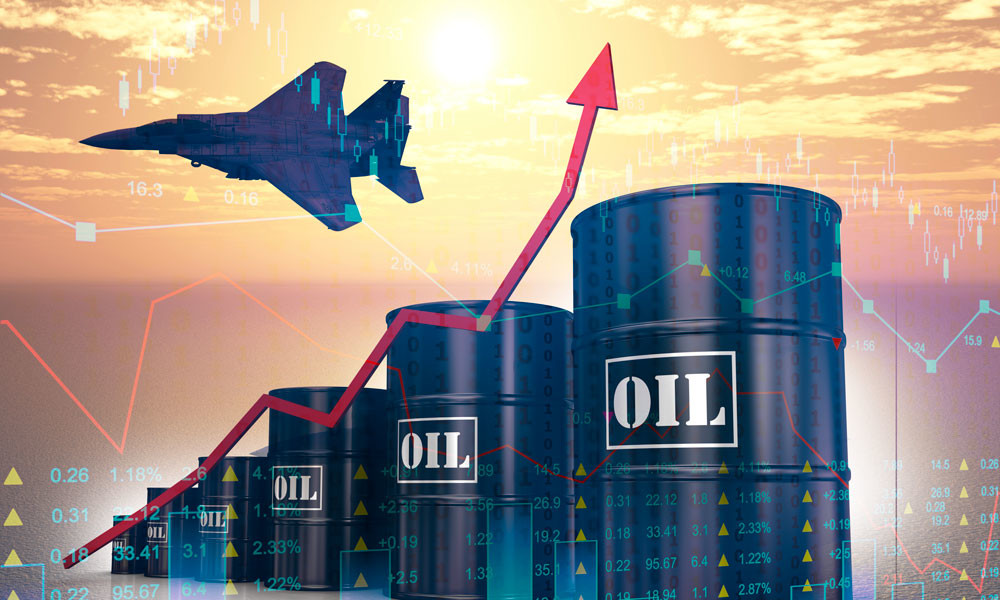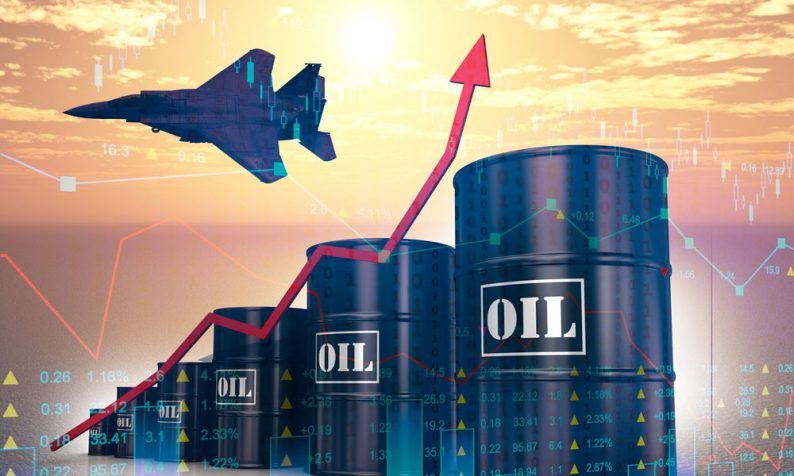The price of oil spiked on Tuesday after Turkey shot down a Russian fighter jet for allegedly violating Turkish airspace, sending investors into a panic about a growing geopolitical crisis between Russia and NATO.

Background
Mideast tensions reached a boiling point on Tuesday after Turkish forces shot down a Russian warplane near the Syrian border. One of the pilots was killed by ground fire after he parachuted from the plane. Another Russian marine was reportedly killed in a rescue mission. Both Russian troops were killed by Western-backed militants on the ground in Syria.
Russian President Vladimir Putin warned of grave consequences for Turkey, which is also a member of the North Atlantic Treaty Organization (NATO), an intergovernmental military alliance consisting mainly of North American and Western European countries.
On Wednesday Russia said it would deploy S-400 defense missile systems in Syria to deter any future air strike by Turkey, which is supporting opposition groups trying to oust Syrian President Bashar al-Assad. Russia, which supports Assad, launched a military campaign in Syria on September 30 targeting ISIS militants.
Why did oil prices spike?
The West Texas Intermediate (WTI) benchmark for US crude climbed nearly 3 percent on Tuesday, its biggest one-day rally in three weeks. Global benchmark Brent crude also rose nearly 3 percent.
To understand why oil prices spiked, it’s important to remember that Middle Eastern countries are major energy producers. Countries like Saudi Arabia, United Arab Emirates, Iran, Iraq and Kuwait collectively produce more than 24 million barrels per day.[1] Geopolitical concerns – and in this case, fears about a Russia-Turkey standoff in Syria – raised fears of a supply disruption in the region.
Investors are constantly worried that Mideast volatility could disrupt the flow of energy from the region, which has significant implications for a global economy that is still heavily reliant on oil. That’s why news of violence in or near any major Middle Eastern oil-producing country may spur price gains.[2] This remains true even in the current period of cheap oil. Saudi Arabia’s involvement in Yemen, violence in Syria, unrest in Egypt and ISIS military gains in Iraq have all pushed prices higher at some point over the past 12 months.











Leave A Comment